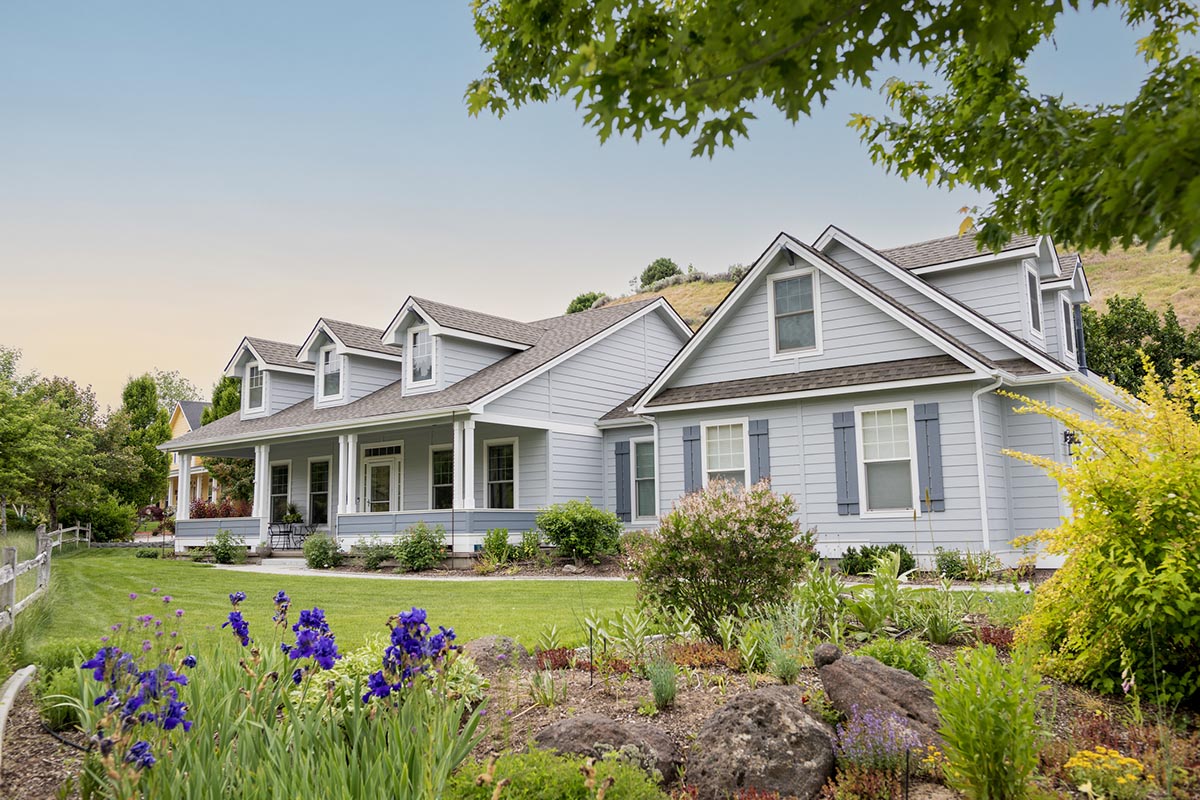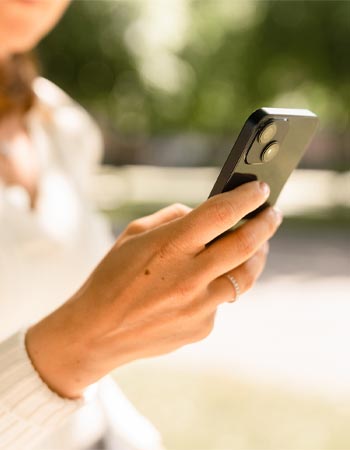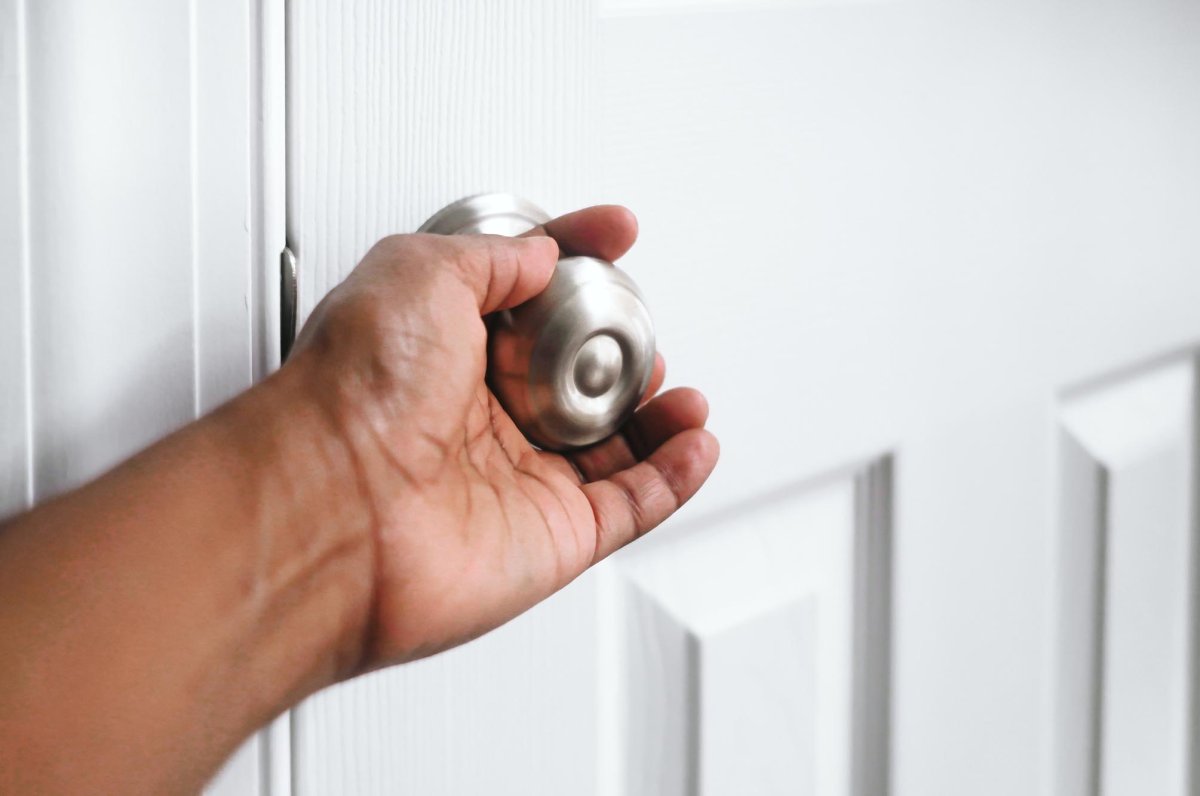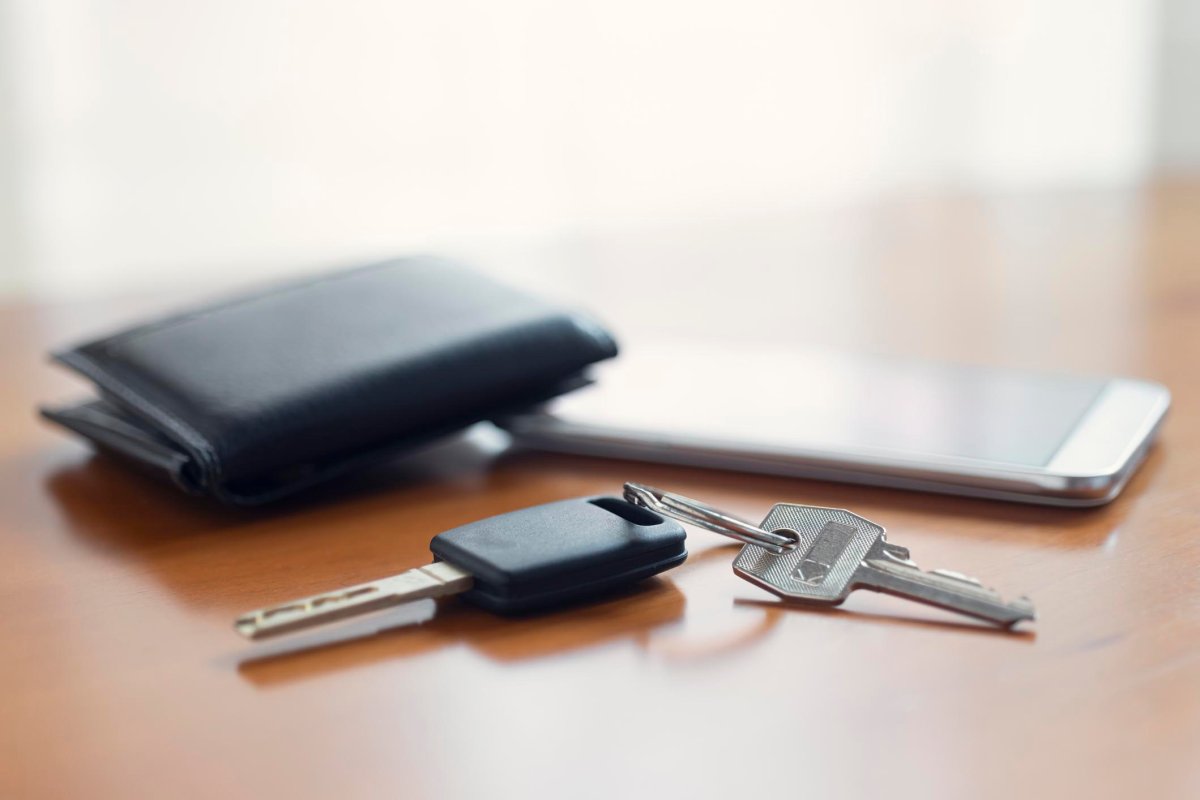

We may earn revenue from the products available on this page and participate in affiliate programs. Learn More ›
What You Need to Know
-
- If you’re locked out of the house, look for a first-floor door and window that might be unlocked, or call a friend or family member who has a spare key.
-
- If you rent your home, call your landlord for assistance.
-
- Try unlocking the door without a key, or call a locksmith to help you get back in.
-
- Prevent future lock-outs by installing a smart lock, giving a spare key to someone you trust, hiding a spare key or keeping one in your wallet, or making grabbing your keys part of your routine.
Q: Last night I was almost locked out of the house, as I nearly left my keys on the counter before walking to a neighborhood BBQ. That got me thinking—what should I have done if I locked myself out of my house? And are there steps I can take to make sure it never happens? I’m thinking of giving a spare key to a neighbor, but I’m unsure what else can be done!

A: Getting locked out of your house can be a frustrating experience, but it’s not as uncommon as you may think. And unless you’re prepared, the situation can be more terrifying than it has to be.
Thankfully, there are plenty of ways to get back inside a house without breaking in through your door, even if all signs point to the opposite. From checking windows or removing door knobs to calling a locksmith or family member with a spare key, there’s no shortage of options at your disposal. Once you get back inside, you can then take steps to protect yourself from getting locked out again. This includes installing smart locks or hiding a key in a secure location somewhere else on your property.
Getting Back Into a Locked House
If your door lock is locked and you’re outside the home, the first thing to do is stay calm. It’s easy to panic, but there are several ways to remedy the situation. Here’s a look at actions you can take to get back inside.
1. Look for an unlocked door or first-floor window.
The quickest way to get back inside a home when locked out of the house with no key is by searching for another door or window that may be unlocked. Whether it’s a back door or basement window, be sure to check all entryways that are reasonably accessible. This might mean removing or damaging a window screen, but if it’s the difference between being locked outside and getting back inside, that’s a small price to pay. If there’s no easy way to get to the second-story windows, it’s best to leave them be—there are plenty of other ways to get inside, so there’s no reason to risk an injury.
2. Call a family member, friend, or neighbor who has a spare key.
If a family member, friend, or neighbor has a spare key, now is the time to try and contact them. People locked out of their homes who still have their smartphones with them can place a quick call to the owner of their spare. If the cell phone is inside the house, consider asking a neighbor or walking to a local shop and using their phone. This won’t be possible in all locations (especially in rural areas), but it’s a nice backup if a smartphone isn’t readily available. At any rate, contacting the person responsible for the spare key should be a top priority.
3. If you’re a renter, call your landlord.
Individuals locked out of a rental unit can contact either their landlord or the maintenance company to help get back inside. The landlord will almost certainly have a spare key. If the rental unit is part of a large apartment building, there’s likely a maintenance technician on site who can help instead of the landlord. Many apartments also have a leasing office, so if someone is locked out of an apartment and doesn’t have the contact details for maintenance or their landlord, they can try this location as a backup. Most leasing offices are staffed during normal business hours and are more than willing to help tenants locked outside their apartments.
4. Try unlocking the door with a paper clip or credit card.
Though it’s not easy, attempting to pick the lock is worth consideration. Some door latches can be reached with a twisted paper clip or credit card. To attempt this, the card or paper clip needs to slip past the strike plate and catch the door latch. Once the latch is caught, it can be pushed out of place and the door can be opened. If the deadbolt is in place, this technique will not work. But if it’s just a simple latch on a door knob, it’s certainly worth a try. Unlocking a door this way is tricky, though it may be effective in some situations.

5. Remove the knob from the door.
Another possible way to get back inside is to remove the door knob. This requires users to have access to a standard toolkit, though often just a screwdriver can get the job done. Most knobs don’t have exposed screws on their exterior plate, but it’s possible to gain access to them by looking for a small slot somewhere else on its faceplate. This small slot keeps the knob and faceplate in place—by depressing it, users can remove the faceplate and gain access to the screws.
With the screws exposed, they can be loosened and the door knob can be removed. This gives access to the lock’s inner workings, part of which includes a mechanism for opening the door. Try using a screwdriver to twist the inner component, which should unlock the latch. Keep in mind these general steps won’t work for all types of locks, as each model is unique. For detailed steps, it’s a good idea to look up installation instructions for the specific brand in question.
6. Call a locksmith to help you get back into the house.
The simplest way to unlock a locked door is by contacting a locksmith. These trained professionals can not only circumvent a locked door, but they’re trained to also repair or replace the lock once the door is open. The process typically doesn’t take very long, with many home lockout services lasting no more than an hour.
Pricing for locksmiths varies by location, but in an emergency situation, they’re worth every penny. Many locksmiths deal with more than just residential homes, making them a great choice when locked out of a car, RV, or any other building. They can even rekey a lock and help people locked out with the key stuck in the door. They are also trained to assist with changing locks on the door if an upgrade or replacement is required. So if none of the above steps work, a locksmith offering house lockout service is the best option.
5 Ways to Prevent Future Lock-Outs
While accidents can happen to anyone, there are steps people can take to prevent future house lockouts. This includes simple things like hiding a spare key somewhere around the property and giving a spare to a neighbor, along with more complicated tasks like installing smart locks. Not all of these steps will apply to all homes, but the more failsafes in place, the better the odds of getting back inside.

1. Install a home security system that includes smart door locks.
Installing one of the best security systems (such as Vivint or ADT) is a great way to keep burglars at bay and improve home security. If the system also includes a smart lock, users have a quick way to get back inside when locked out. In fact, many smart locks are designed in a way that makes it nearly impossible to get locked out, as they can be controlled with a physical key or the built-in keypad.
With a traditional lock, leaving the key inside the home results in a lockout. With a smart lock, leaving the key inside simply means users need to use their digital code to get back inside. Some of the best smart locks, like the Yale Assure Lock 2, also work with mobile companion apps, letting users open the door with their smartphone.
Alternatively, many of the best electronic door locks toe the line between traditional and smart locks, making them a good choice for homes looking for the best of both worlds. It’s important to read up on what smart locks are before making a purchase, as well as learn about the types of door locks available, as there are advantages and disadvantages to them all.
While shopping for a security system and smart lock, homeowners can also pick up other security gear, including the best door security bars to help prevent break-ins.
2. Give a spare key to a trusted person.
Giving a key to a trusted neighbor or nearby family member is a simple (yet effective) way to prevent getting locked out. Ideally, this will be someone easy to reach and within walking distance of the home, ensuring they can quickly get to the home without requiring a phone call or a long drive.
However, it’s important to have complete trust in the person receiving the spare key. Not only can they help during lockouts, but they can essentially enter the home whenever they’d like. This makes it important to only pass out spare keys to neighbors who have proven themselves to be responsible and trustworthy. Otherwise, this step could result in more headaches than it’s worth.
3. Hide a spare key around your home or install a lock box.
Hiding a spare key on the property is another popular way to ensure lockouts never happen, but this needs to be handled with care. Ideally, a lock box with a spare key inside will be installed near the front door, allowing only people with the password access to the spare. This is leagues better than simply hiding a key under the doormat or inside a yard decoration, as anyone who stumbles upon the key will be able to get into the home.
If a lockbox isn’t used, then ensure that the hidden spare key is in a location that won’t be disturbed by harsh weather or easily seen by prying eyes. This includes inside a dog house, under a brick or patio paver, inside a magnetic holder placed under a bench, or stowed away inside a fake rock. Poor locations to hide a key include under a doormat, under a flowerpot, or on top of the door frame.

4. Keep a spare key in your wallet or purse.
Keeping a spare key in a wallet or purse comes with serious drawbacks. For one, if the wallet or purse is lost, someone will now have a key to the home, meaning it’s best to have the lock rekeyed. If the key is placed in a purse or wallet without a way to keep it secure, it’s also possible for it to slip out while reaching for a credit card or cash. Because of this, anyone storing a key in their wallet or purse will need to invest in a key holder—these are cheap, secure, and prevent the key from rubbing against the wall of the wallet and piercing its side.
The benefits of keeping a spare key in a wallet or purse may outweigh the drawbacks, especially for people who never leave home without their purse or wallet. This essentially gives individuals another way to get back inside their home without requiring their keychain.
5. Make picking up your keys part of your routine before leaving home.
The simplest way to prevent a lockout is to get in the habit of never leaving home without a set of keys. This is easier said than done, but certain actions help turn this into a routine. Many people prefer to place a dish or tray near their front door for valuables like their keys. When leaving the home, having the keys right next to the exit makes it virtually impossible to forget them. Other people like to use a keychain that’s visually appealing, ensuring it catches their eyes when leaving the home.
Aside from making the keys easy to spot when leaving, good habits include reserving a specific pocket for keys, checking for keys before closing any lockable door, and communicating with family members or roommates to ensure they don’t get locked out if no one else is home.
Getting locked out of the house can be a frightening experience. Thankfully, there are several ways to remedy the situation and get back inside. From asking a neighbor for a spare and checking for unlocked windows to calling a locksmith or attempting to pick the lock, there’s an option that works for everyone.
The best option is to prevent lockouts from happening in the first place. To that end, installing smart locks and stashing a spare key on the property are both great options. Each home will have techniques that work better than others, and it’s up to each individual to determine what works best for them.
